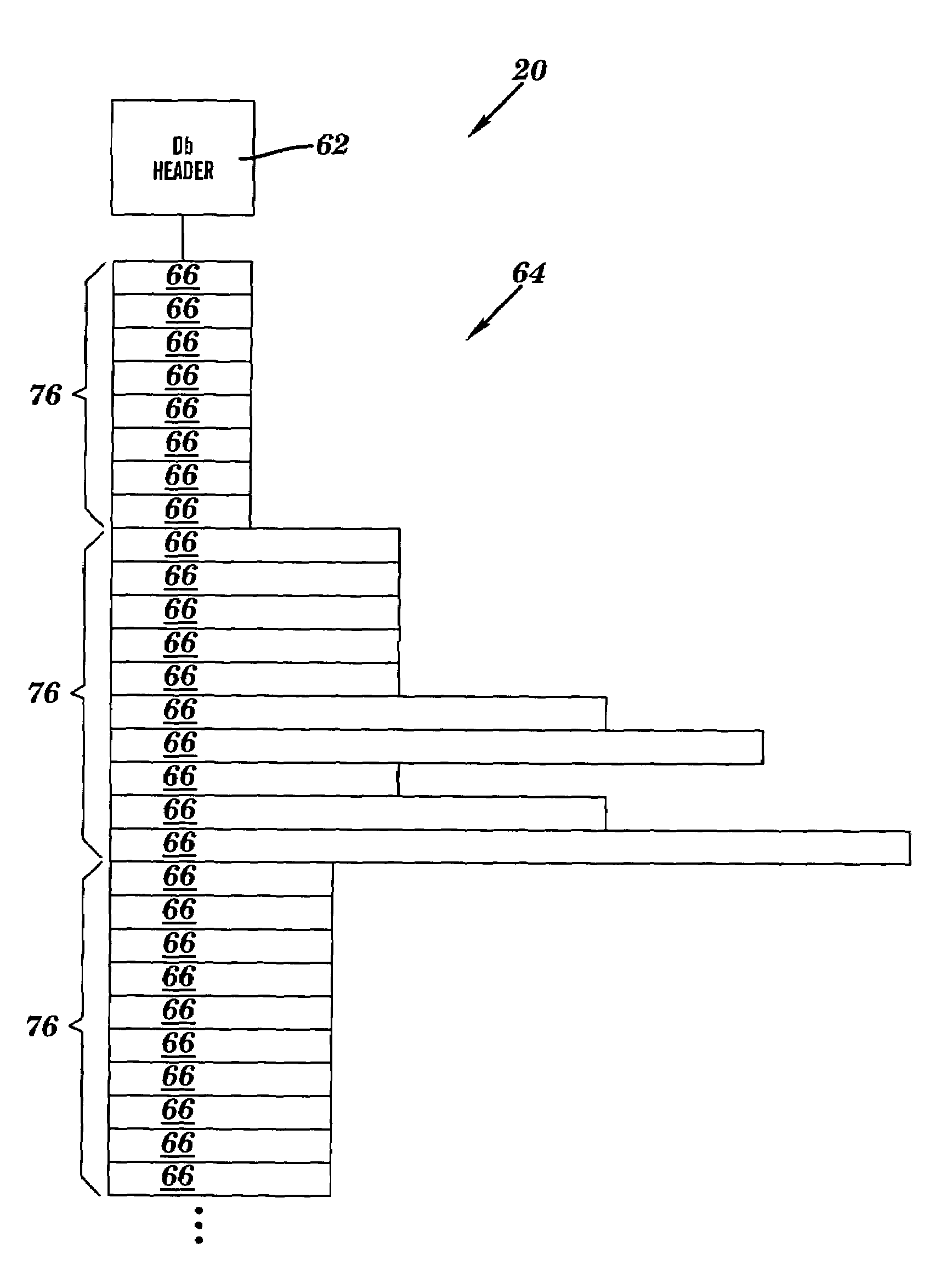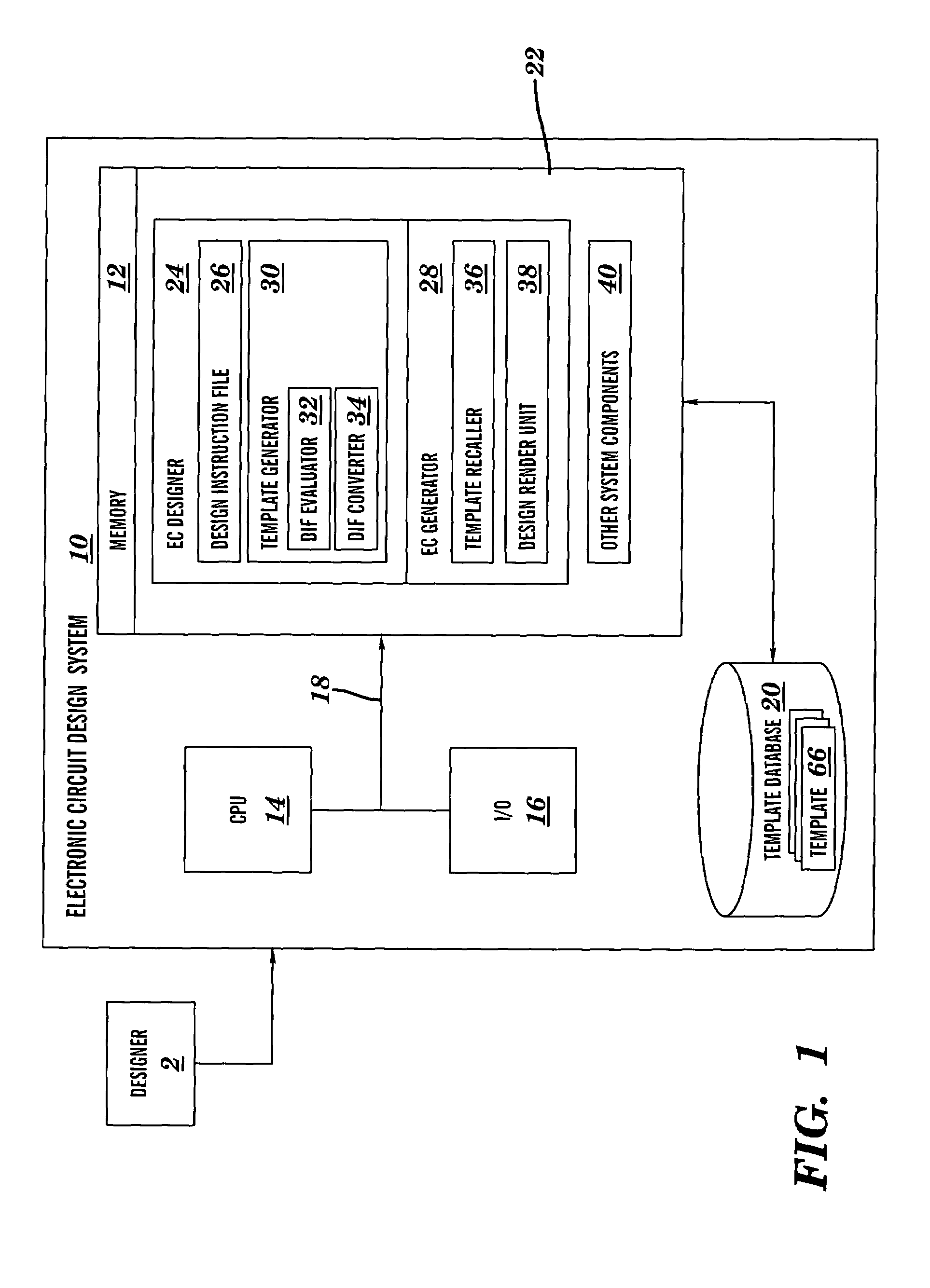Electronic circuit design
a technology of electronic circuits and circuits, applied in the field of electronic circuit design, can solve the problems of large design instruction files, and increasing the storage requirements of the myriad of design feature instructions and design instruction files, so as to reduce the size of design data, reduce data storage and computer resource requirements, and leverage the effect of features redundancy
- Summary
- Abstract
- Description
- Claims
- Application Information
AI Technical Summary
Benefits of technology
Problems solved by technology
Method used
Image
Examples
Embodiment Construction
[0027]For purposes of convenience only, the following description includes the following headings: I. System Overview, II. Template, III. Design Instruction File, IV. Attribute Look Up Lists, and V. Operation Methodology.
I. System Overview
[0028]With reference to the accompanying drawings, FIG. 1 is a block diagram of an electronic circuit design system 10 in accordance with the invention. System 10 includes a memory 12, a central processing unit (CPU)14, input / output devices (I / O) 16 and a bus 18. A template database 20 is also provided for storage of feature templates and other data relative to processing tasks, as will be described in greater detail below. Memory 12 includes a program product 22 that, when executed by CPU 14, comprises various functional capabilities described in further detail below. Memory 12 (and database 20) may comprise any known type of data storage system and / or transmission media, including magnetic media, optical media, random access memory (RAM), read on...
PUM
 Login to View More
Login to View More Abstract
Description
Claims
Application Information
 Login to View More
Login to View More - R&D
- Intellectual Property
- Life Sciences
- Materials
- Tech Scout
- Unparalleled Data Quality
- Higher Quality Content
- 60% Fewer Hallucinations
Browse by: Latest US Patents, China's latest patents, Technical Efficacy Thesaurus, Application Domain, Technology Topic, Popular Technical Reports.
© 2025 PatSnap. All rights reserved.Legal|Privacy policy|Modern Slavery Act Transparency Statement|Sitemap|About US| Contact US: help@patsnap.com



